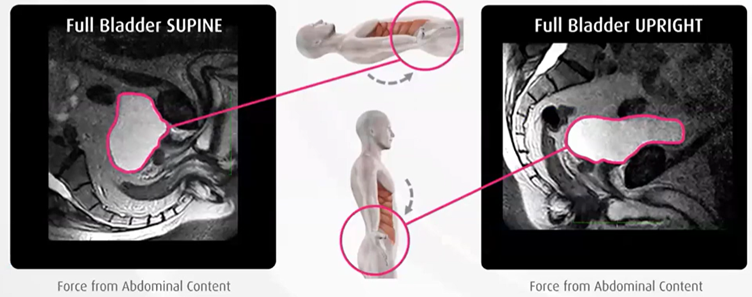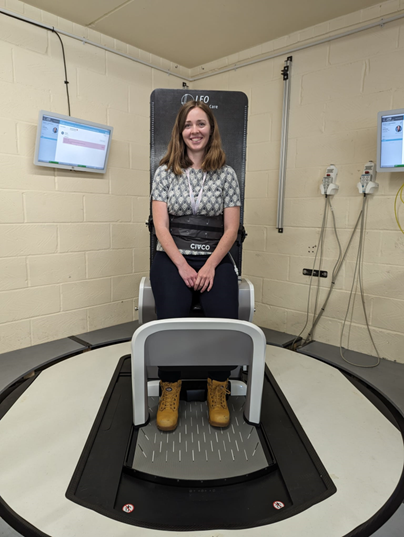The future is in their hands: When a radiotherapy student met the Leo technology
Leo Cancer Care understands that the future of radiotherapy lies in the hands of the professionals that will use its technology and a huge percentage of that will be the next generation of radiation therapist. As a company, Leo Cancer Care draws inspiration from so many different groups of people from their life experiences, their thoughts and their passions and it is for that reason it welcomes students from different professions to come and learn what we do but also share with us their ideas.
Below is a blog written by Tara Smith a final-year radiotherapy student from Suffolk University in the UK who spent a week with us learning about our technology, our research and our drive to change the face of radiotherapy. Here Tara describes her thoughts on her time spent with us.
“My first impression of Leo is that it’s an exciting and innovative place to work. They describe themselves as ‘positive disruptors’ in the radiotherapy market, which I find appealing as someone who embraces change and innovation. The design of a system that images and delivers radiotherapy in the upright position has input from pioneers in radiotherapy technology on both sides of the Atlantic. The team consists of a brilliant mix of physicists, engineers, radiographers and product designers who all work together in one office, making it easy to share ideas and knowledge from different areas of expertise. The meticulous level of detail they have considered from both the R&D and operational side is mind-boggling. Whilst it could be very easy to get distracted with day-to-day details that you’d expect within the design and engineering of a novel machine, the reminder of why they’re doing this work is always there: to improve the patient experience and their treatment quality. As you walk into the office, the wall is covered with notes from every staff member on why they are proud to be working for Leo, which serve as a daily reminder on the significance of their work. Around the office also are large framed infographics created by an illustrator who sat in on a patient focus group, which quotes some very poignant and insightful comments from service users about how radiotherapy made them feel.
What are Leo working on?
Leo plan to change the way in which radiotherapy treatment is delivered. The basis of their technology is by using a fixed beam and rotate the patient rather than the other way around. This may sound radical to begin with, but there are many benefits of doing this and Leo have demonstrated how (from a patient and clinical perspective) this can be executed quite easily…
Current radiotherapy treatments using either a linear accelerator or proton beam machine use a rotating gantry to deliver the dose around the patient. As expected, this moveable component of the machine is extremely heavy, requires a lot of complex shielding around the room and unsurprisingly is very expensive. From a structural perspective, building a radiotherapy treatment suite is very complex, and it’s one of the reasons why many radiotherapy departments are built deep into the basement. The recent Proton Centre installed at UCLH reaches nearly 30m below ground and is large enough to contain the Royal Albert Hall! Eliminating the need for a large rotating gantry and its subsequent shielding requirements makes the overall machine much more compact, with the potential ability to fit 2 machines in the footprint of one conventional treatment room. This will increase the treatment capacity as well as making it more affordable.
Upright radiotherapy has been explored in the past but previously did not have the imaging technology to facilitate this effectively. Leo have developed an upright CT scanner that is compatible with their treatment machines. Instead of a supine patient moving horizontally through the scanner, the scanner will move down over the patient. This will enable on treatment imaging such as CBCT that is expected to be comparable, if not better quality than conventional on-treatment imaging.
Clinically, there is ongoing research that demonstrates how imaging and delivering radiotherapy in the upright position could optimise treatment delivery and reduce the side effects:
Reduction in Organ Motion
Most people spend the majority of their day in the upright position. It is understood that our organs move less in the upright position compared to when lying down in the supine position.
Patients with prostate cancer are treated with a full bladder to minimise the dose to healthy tissue and stabilise the position of the prostate for reproducible, accurate treatment. However, this can be challenging and uncomfortable for many patients. A recent study using MRI imaging compared the anatomical variations in the male pelvis between the supine and upright position (Schreuder et al, 2023). The images show that not only is the prostate position less affected by an empty bladder when in the upright position (Fig. 1) but also that the shape of the bladder also changes between the two positions (Fig. 2). The anterior-posterior length of the bladder is significantly larger in the upright position due to the gravitational pressure of the abdomen compressing the bladder. This creates a more stable position over the prostate. The findings of this research highlight the potential for upright treatments to only require a 50% bladder volume which could be significantly more comfortable for the patient and easier to achieve.
Figure 1 Upright MRI Scan comparing organ positions based on a full bladder (solid line) versus empty bladder (dotted line). The prostate position (light blue) shows a minimal amount of variation between an empty and full bladder.
Figure 2. MRI Images comparing bladder volume distribution in the supine vs upright position.
The liver can drift up to 20mm over a 35 minute period when lying in the supine position, as demonstrated in a study by Siebenthal et al (2007). This means that during radiotherapy treatment to the liver, there is potential for the tumour to move outside the treatment field, potentially causing unnecessary dose to healthy tissue and even an under dose to the planned tumour volume. Treating upright in the natural position could help minimise this.
Research from MD Anderson showed that the lung capacity can be between 25-50% greater when in the upright position (Yang et al, 2014). In addition, the lung motion was reduced by an average of 5mm. An increased lung volume and lower motion range could help improve treatment accuracy and offer tighter treatment margins to minimise dose to healthy tissue. It is also more comfortable to maintain breath hold in the upright position, thus upright radiotherapy could potentially benefit patients receiving treatment for lung cancer and also patients having DIBH treatment for breast cancer.
For patients having radiotherapy to the head/neck area, one of the side effects is oral mucositis. This is where the consistency of the saliva changes to a thick, sticky, mucous-like substance that can accumulate in the mouth and throat. This can make it very difficult and uncomfortable for patients to lie down for their radiotherapy treatment, with many people needing to immediately sit back up to clear their throat. Allowing the patient to maintain an upright position for their treatment could be more comfortable for people experiencing oral mucositis.
Psychological benefit for the patient
Patient feedback is at the heart of Leo’s product development. They hold regular meetings with people who have been through radiotherapy, and one of the key messages is that patients feel more empowered and comfortable when being treated upright. Lying down on a hard treatment bed is uncomfortable and can make patients feel vulnerable when their only line of site is the ceiling and the radiographers staring down at them.
Faster set-up and less manual handling
The majority of indexing settings (shin/knee support, seat position etc) can all be autosaved, allowing faster treatment set up and potentially increase workflow. The treatment chair operates with 6 degrees of freedom, offering further set-up adjustments for increased treatment accuracy. I was lucky enough to try out the patient positioning system as both a patient and operator before it’s shipment to their US office, where it would be paired with its upright CT scanning system for the very first time. I was surprised by how secure and comfortable I felt in the chair, and how easy it was to get set up. As an operator it may take some radiographers a while to get used to the different movement directions (for example sup->inf when upright is the equivalent of an ant/post move when lying down!) but there is always some level of adjustment when changing processes, and it was quick to get the hang of.
The carbon fibre backrest is half of the thickness of a conventional radiotherapy treatment couch, making it significantly lighter. The weight distribution of the patient will also be more even than when lying down, which will reduce the level of manual handling for radiotherapy staff. In fact, all the other immobilisation settings/indexing points can be adjusted using the hand pendant, offering further manual handling reductions. Therapeutic Radiographers are at high risk of work-related musculoskeletal injuries (Hanania et al 2020), which is of particular significance when considering the current workforce shortages in the profession (Radiotherapy UK, 2022).
I had an incredible week with the whole team, all of whom were welcoming and enthusiastic to talk about their work. I would especially like to thank Jemma Nunn for organising my elective, where she organised my time to be spent in each department. This featured hands on time with the test engineers, product design, CAD and 3D printing (where I was able to make a bottle opener!). I am so grateful for everyone at the company who took time out of their day to talk about their job and current projects. I am excited to follow Leo’s journey and hope to one day be able to treat patients in the upright position using their machines.”
References:
Hanania et al (2020). Prevalence of Musculoskeletal Work-related Injuries Among Radiation Therapists. Radiol Technol. 91 (5): 414-421
Niek Schreuder, Wen Hsi, John Greenhalgh, Michael Kissick, Michelle Lis, Tracy Underwood, Harry Freeman, Michael Bauer, Stephen Towe and Thomas ‘Rock’ Mackie (2022) Anatomical Changes in the Male Pelvis between the Supine and Upright Positions: A Feasibility Study for Prostate Treatments in the Upright Position (Under peer review).
Radiotherapy UK (2022). Flash workforce survey. Last Accessed 24th July 2023 at: radiotherapy.org.uk/wp-content/uploads/2022/11/2022-Flash-Workforce-Survey-Report-D8-FINAL.pdf
Siebenthal et al (2007). Systematic errors in respiratory gating due to intrafraction deformations of the liver. Med Phys. 2007 Sep;34(9):3620-9.
Yang et al (2014). Advantages of simulating thoracic cancer patients in an upright position. Practical Radiation Oncology. 4 (1): 53-8.




